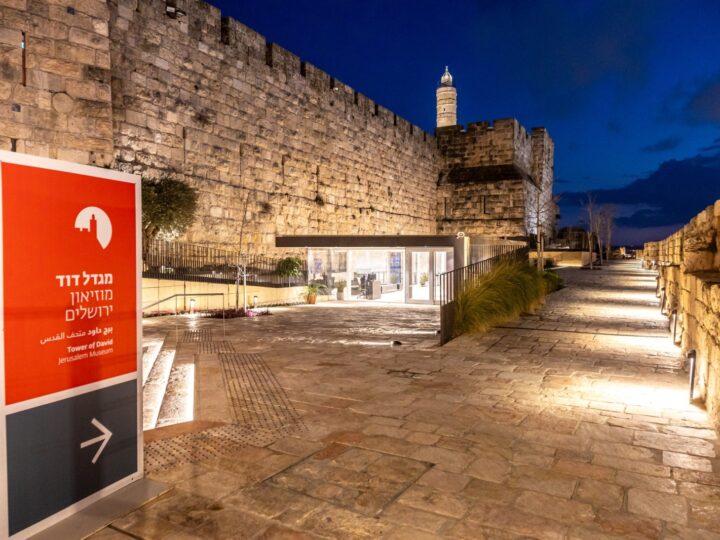It’s no secret that Israel is packed with gorgeous and important-for-all-humanity sites. So much so, that nine of them are designated UNESCO World Heritage Sites, alongside global landmarks such as the Taj Mahal, the Great Barrier Reef and Yellowstone National Park.
To be included in the prestigious list, cultural or natural sites must meet multiple criteria such as representing a masterpiece of human creative genius, containing superlative natural phenomena, or being outstanding examples representing major stages of Earth’s history.
In addition, Israel has made a list of 18 further tentative options worthy of being included, such as Caesarea, Timna and the Sea of Galilee.
Until these join their rightful place, check out those already granted world fame and make sure to visit as many as you can when you’re next here – they made it to the list for good reason.
Masada

No visit to Israel is complete without a trip to Masada, and it seems the experts over at the UN agree.
The ancient mountaintop fortress, where a group of Jewish families held out for several months against the mighty Roman Legion, stands starkly against the backdrop of the Judean Desert and the Dead Sea and is an absolute sight to behold.
It is also apparently the most complete surviving Roman siege works and, from personal experience, completely worth the grueling hike (though you can also take a cable car up and down).
The Old City of Acre

The Old City of Acre (Akko) on the northwestern coast is unique in that it showcases a stunning mix of Crusader and Ottoman architecture.
The Knights’ Hall, Grand Mosque and cobbled alleyways look straight out of a movie set, but most luckily are home to a wonderful mix of people and traditions.
Our top tip is to visit the area on the most scorching of summer days to allow the cool, ancient stones offer you respite from the glaring sun – just as they have for a myriad of generations before you.
Tel Aviv’s White City

The White City in Tel Aviv is the most comprehensive collection of Modernist architecture. Colloquially known as “Bauhaus,” it’s represented by white buildings with curved balconies and gracious proportions built with functionality in mind.
A lot of Modernist architects escaped Europe during World War II to Tel Aviv, bringing over with them this unique style to our little corner of the Middle East and giving it a whole new look. While there are numerous tours you can take in Tel Aviv to learn more about it, you can also simply enjoy a stroll on city streets such as Rothschild Boulevard and spot plenty of examples.
Biblical tels at Megiddo, Hazor and Beersheva

Tels are prehistoric settlement mounds, and can be found across Israel, Lebanon, Syria and eastern Turkey.
Out of the 200 tels in Israel, UNESCO selected the three at Megiddo (aka Armageddon), Hazor and Beersheva as prime examples both of biblical connections and of Iron Age centralized authority, trade routes and underground water collection, all of which give us a glimpse at the flourishing communities that once lived here.
The Incense Route and Desert Cities in the Negev

To this day, the Negev Desert in Israel’s south can make for pretty harsh surroundings, so we can only imagine it was so much more so 2,000 years ago.
And yet, as the four Nabatean towns scattered along the ancient incense route demonstrate, this harsh landscape was populated, farmed and formed an important part of the incense and spice trade route that crossed from southern Arabia to the Mediterranean Sea.
Nowadays, you can check out the archeological remains of forts and irrigation systems and be eternally grateful to make it back to an air-conditioned bus at the end of your tour.
Bahá’i Holy Places in Haifa and the Western Galilee

The Bahá’i faith was established in Iran in the 19th century, and through twists of fate and exile built some of its holy places and central administration in the northern Israeli cities of Haifa and Acre.
UNESCO notes the shrines in the two cities associated with the religion’s founders, their spiritual importance and the part they play in pilgrimage. The two complexes, with their meticulous gardens, provide visitors an opportunity to admire another culture and religion in quiet, respectful and beautiful settings.
Nahal Me’arot at Mount Carmel

UNESCO chose the Nahal Me’arot (River of Caves) complex in Mount Carmel for its stunning example of human evolution. The area, which houses three cave complexes, includes archeological remains that represent at least half a million years of human evolution, including the somewhat simultaneous existence of Neanderthals and modern humans onsite.
Also found at the site are examples of stone architecture and different tools, marking the transition of mankind from a hunter-gatherer lifestyle to an agricultural one (Yuval Noah Harari fans, you know what I’m talking about). This, UNESCO notes, makes the area a key site for the understanding of human evolution in general and prehistory in the Levant in particular.
Maresha and Bet Guvrin Caves

Not only do the Maresha and Bet Guvrin caves in the Judean lowlands make for a wonderful family day trip, but they also serve as a microcosm of the Land of Caves and the cultural mosaic of the area that was at the crossroads of two great empires – Egypt and Mesopotamia.
The quarried caves in the area – some 3,500 of them – were used as places of worship, dovecotes, oil presses and cisterns, and give a fascinating idea of how people lived here for a period of 2,000 years, from the eighth century BCE to the Middle Ages.
Beit She’arim necropolis

While a graveyard might strike you as an odd choice for a World Heritage Site, the Beit She’arim necropolis near Haifa sure is special enough.
This series of catacombs served as a prominent Jewish burial site some 2,000 years ago and includes a wide array of art, treasure troves, graves and inscriptions in Hebrew and Greek, including a good few curses meant to scare off graverobbers.
Its importance lies in its connection to Rabbi Judah the Prince, who led the Jewish community during the time of Roman rule and after the Roman destruction of the Second Temple in 70 CE.
















